Related Research Articles

John Nash was one of the foremost British architects of the Georgian and Regency eras, during which he was responsible for the design, in the neoclassical and picturesque styles, of many important areas of London. His designs were financed by the Prince Regent and by the era's most successful property developer, James Burton. Nash also collaborated extensively with Burton's son, Decimus Burton.

Sir Charles BarryFRS RA was a British architect, best known for his role in the rebuilding of the Palace of Westminster in London during the mid-19th century, but also responsible for numerous other buildings and gardens. He is known for his major contribution to the use of Italianate architecture in Britain, especially the use of the Palazzo as basis for the design of country houses, city mansions and public buildings. He also developed the Italian Renaissance garden style for the many gardens he designed around country houses.
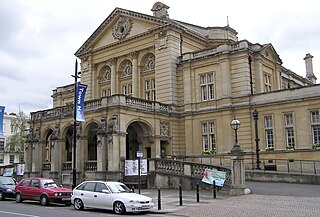
Cheltenham is a spa town and borough on the edge of the Cotswolds in Gloucestershire, England. Cheltenham became known as a health and holiday spa town resort following the discovery of mineral springs in 1716, and claims to be the most complete Regency town in Britain.
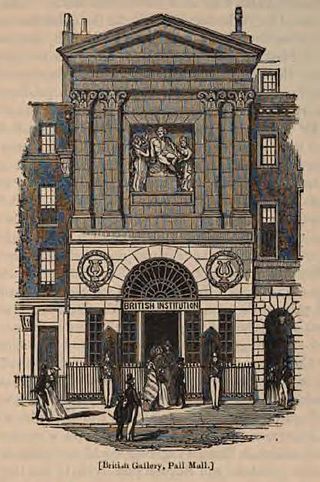
George Dance the Younger RA was an English architect and surveyor as well as a portraitist.
William Wilkins was an English architect, classical scholar and archaeologist. He designed the National Gallery and University College London, and buildings for several Cambridge colleges.
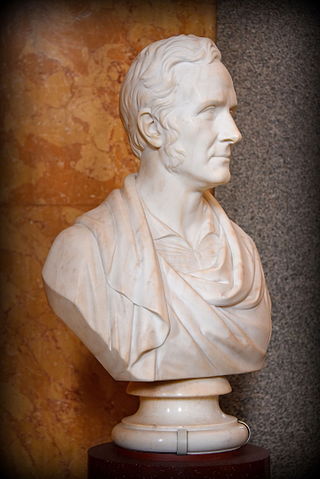
Sir Robert Smirke was an English architect, one of the leaders of Greek Revival architecture, though he also used other architectural styles. As an attached architect within the Office of Works, he designed several major public buildings, including the main block and façade of the British Museum and altered or repaired others. He was a pioneer in the use of structural iron and concrete foundations, and was highly respected for his accuracy and professionalism. His advice was often sought in architectural competitions and urban planning, especially later in his life.

Charles Robert Cockerell was an English architect, archaeologist, and writer. He studied architecture under Robert Smirke. He went on an extended Grand Tour lasting seven years, mainly spent in Greece. He was involved in major archaeological discoveries while in Greece. On returning to London, he set up a successful architectural practice. Appointed Professor of Architecture at the Royal Academy of Arts, he served in that position between 1839 and 1859. He wrote many articles and books on both archaeology and architecture. In 1848, he became the first recipient of the Royal Gold Medal.
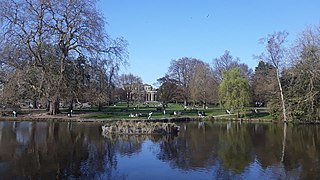
Pittville is a residential suburb of Cheltenham, Gloucestershire, England, founded in the early 19th century by Joseph Pitt. The population of Pittville Ward at the 2011 Census was 5,327. It contains Pittville Park, with its long gardens, two lakes, boat house, three cafes, tennis courts, menagerie, children's play area, 9-hole pitch and putt golf course, and one of Cheltenham's grandest and most celebrated buildings, the Pump Room.
Robert Abraham (1773–1850) was an English building surveyor and later architect in London. He was the son of a builder and was educated as a surveyor as a pupil of James Bowen. He turned to architecture after 1818, and was chiefly employed by the leading Roman Catholic families in England, including the Duke of Norfolk and the Earl of Shrewsbury.

The Pittville Pump Room was the last and largest of the spa buildings to be built in Cheltenham.

John Buonarotti Papworth was a British architect, artist and a founder member of the Royal Institute of British Architects.
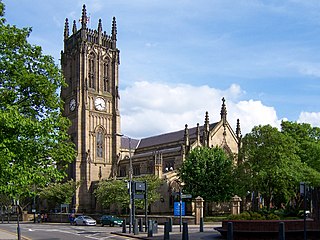
Robert Dennis Chantrell, was an English church architect, best-known today for designing Leeds Parish Church, now Leeds Minster.
Thomas Cundy the younger was an English architect, son of another architect of the same name. He joined his father's practice and ultimately succeeded his father as surveyor of the Grosvenor Estate, and held the position during the main phase of the development of Belgravia and Pimlico by the contractor Thomas Cubitt.
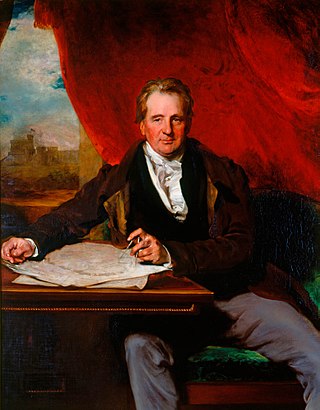
Sir Jeffry Wyatville was an English architect and garden designer. Born Jeffry Wyatt into an established dynasty of architects, in 1824 he was allowed by King George IV to change his surname to Wyatville. He is mainly remembered for making alterations and extensions to Chatsworth House and Windsor Castle.

Edward Haycock Sr. was an English architect working in the West Midlands and in central and southern Wales in the late Georgian and early Victorian periods.
Robert Stokes practised briefly as an architect in England in the 1830s before emigrating to New Zealand, where he had a varied career as a land surveyor, a newspaper proprietor and latterly as a member of the New Zealand Legislative Council. The Lower Hutt suburb of Stokes Valley in New Zealand commemorates his name.
Henry Seymour was one of the earliest settlers in Nelson, New Zealand, where he was a trader and land speculator. He was a member of the Legislative Council of New Munster Province from 1849, and was appointed to the new Legislative Council in 1853 until his resignation in 1860. He returned to England and died in Worcestershire.

Lansdown is a district of the Regency town Cheltenham Spa in Gloucestershire, England. Situated in a conservation area, much of the architecture is listed, including the distinctive Lansdown Estate.
Richard Lockwood Boulton was an English sculptor who founded the firm Messrs R. L. Boulton & Sons. It was centred in Cheltenham, England, and built monuments made of iron and stone in the United Kingdom.
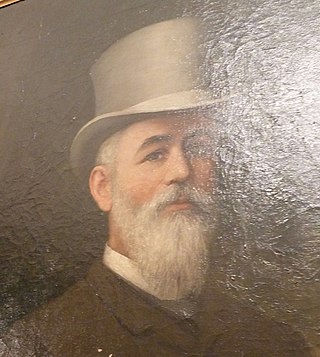
Isaac Thomas Shutt was an architect, a farmer, and the proprietor of the Old Swan Hotel, Harrogate, then in the West Riding of Yorkshire, England, from 1849 to 1879. In 1842, at the age of 24 years, he designed the Royal Pump Room, Harrogate, now a Grade II* listed building. In partnership with Alfred Hill Thompson he co-designed the Church of All Saints, Harlow Hill.
References
- ↑ D Verey and A Brooks, Buildings of England, Gloucestershire 2, The Vale and the Forest of Dean, ISBN 0-300-09733-6
- ↑ H.M. Colvin, A Biographical Dictionary of British Architects, 1600–1840 (1997) ISBN 0-300-07207-4
- ↑ S. Blake, The unfortunate Mr Forbes: the rise and fall of a Cheltenham architect, Cheltenham Local History Society Journal 7, 1989 ISSN 0265-3001
- ↑ Bath Chronicle, 29 Nov 1821,
- ↑ Cheltenham Chronicle, 8 Aug 1838